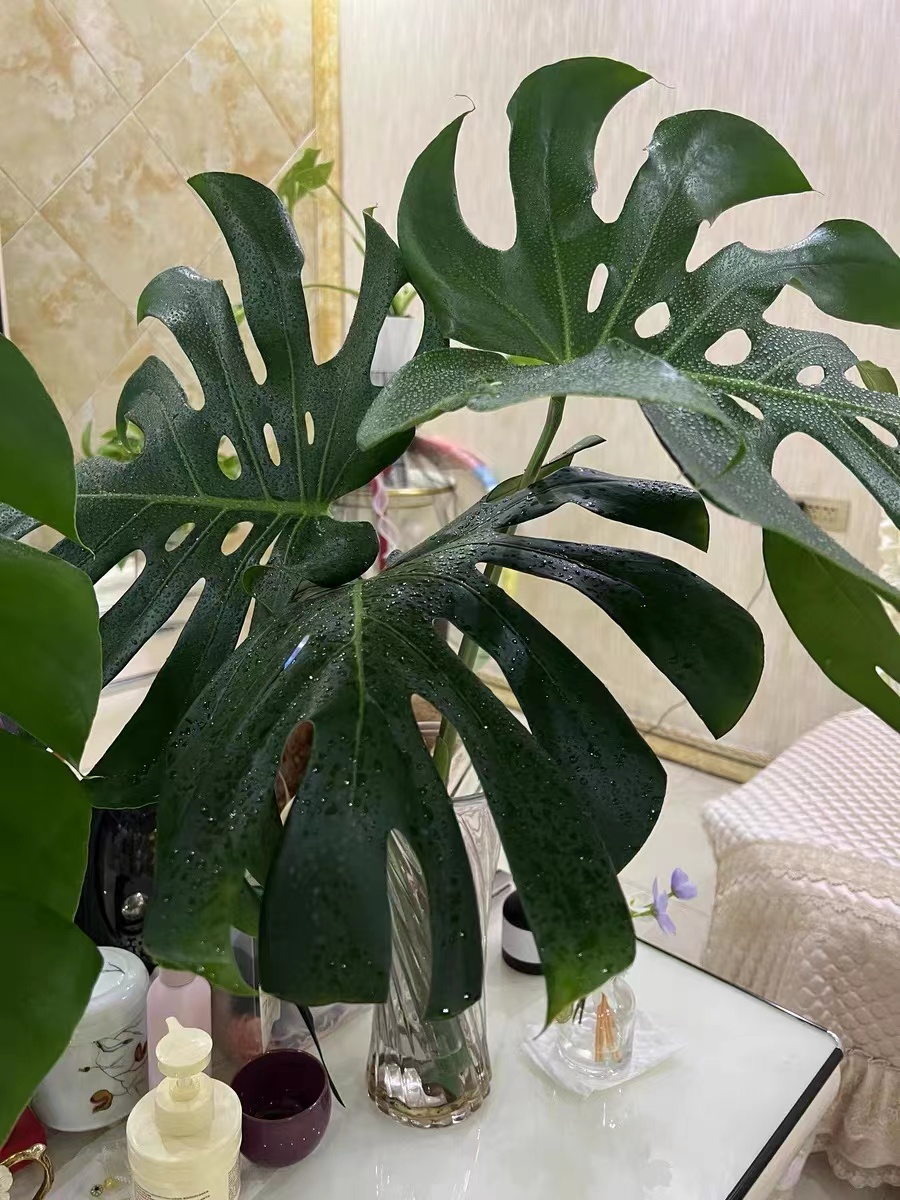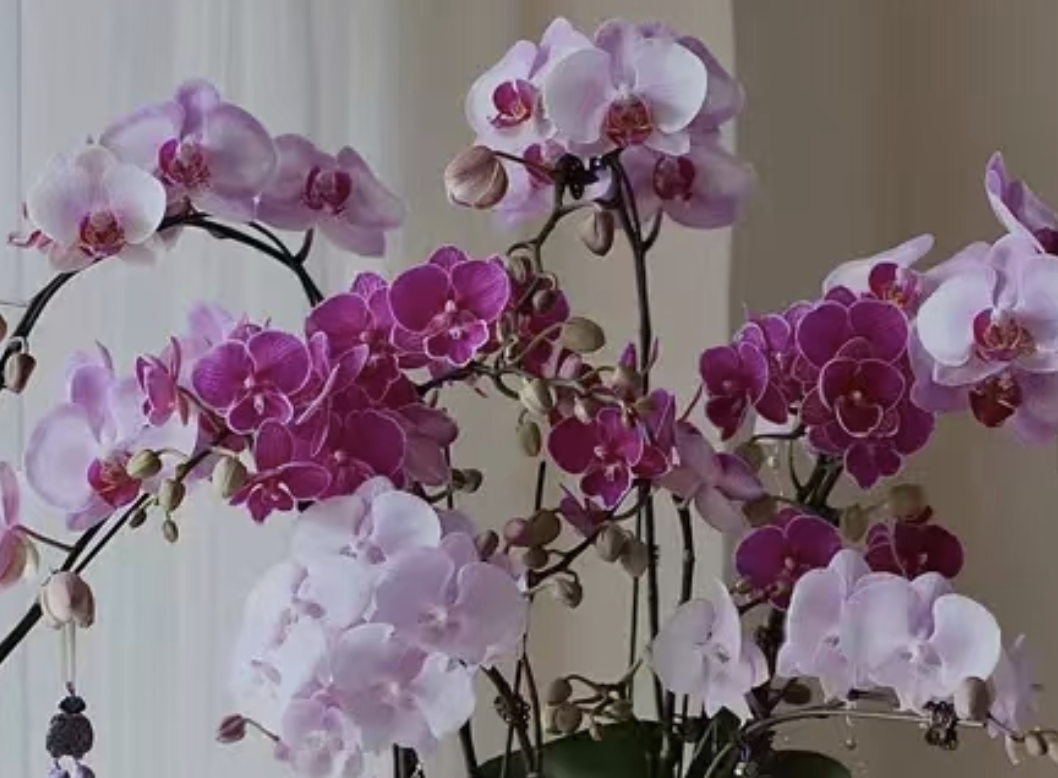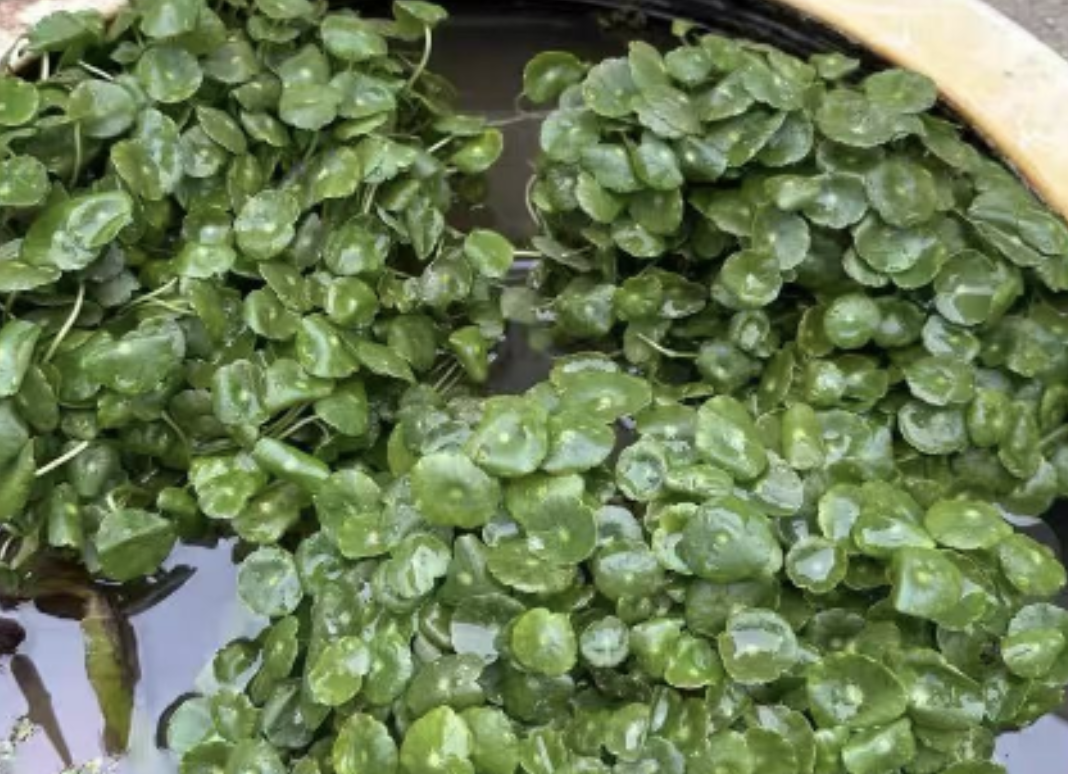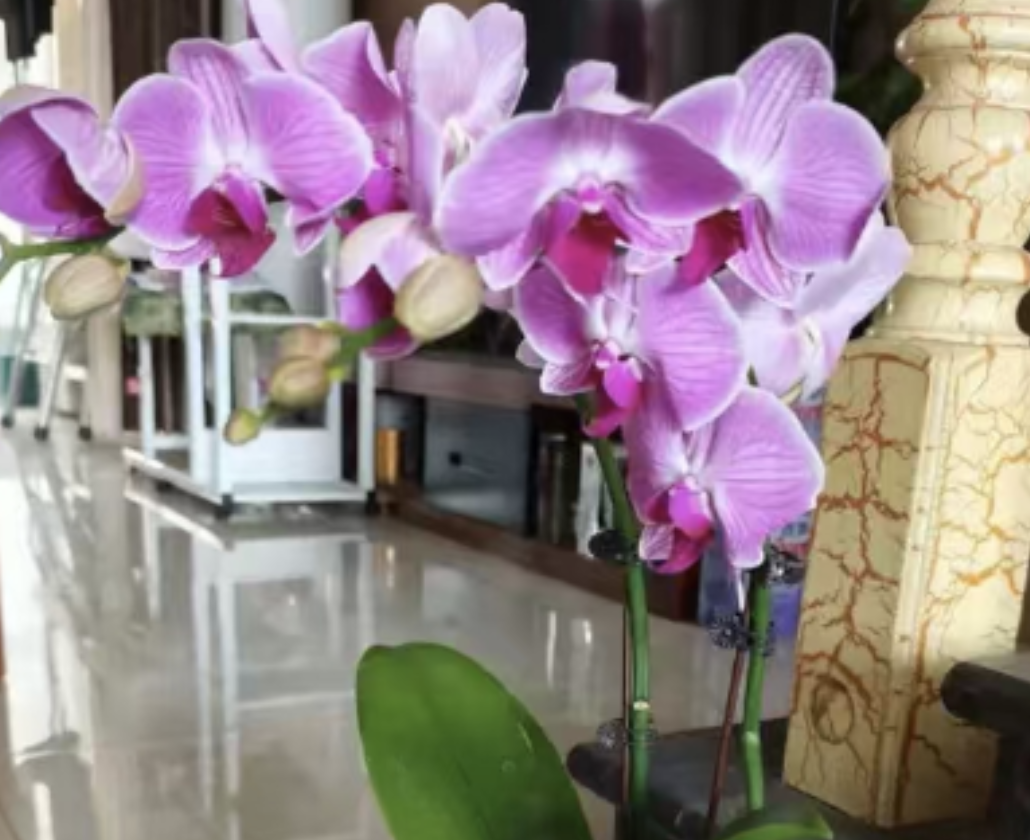Monstera deliciosa gets its name because its leaves are similar in shape to the shell of a turtle. However, during the cultivation process, many flower lovers will encounter a problem: why don't the leaves of Monstera deliciosa "split on the back" as expected, that is, there are no natural cracks on the leaves? So, can the splitting on the back of Monstera deliciosa be artificially intervened? And what methods can promote its natural splitting on the back?
The splitting on the back of Monstera deliciosa is a phenomenon in the natural growth process of plants and cannot be achieved by direct artificial intervention. The cracks on the leaves are gradually formed as the plant grows and are closely related to various environmental factors such as light, temperature, humidity, and nutrients. Therefore, we should not try to forcibly change the leaf shape of Monstera deliciosa by external force. Doing so is likely to cause damage to the plant and even affect its normal growth.
Although it is not possible to directly split on the back artificially, we can promote the natural splitting on the back of Monstera deliciosa by optimizing the cultivation conditions. Here are some effective methods:
Different varieties of Monstera deliciosa may have different splitting on the back situations. When purchasing, you can give priority to choosing those varieties that are easy to split on the back, such as "big Monstera deliciosa" and "small Monstera deliciosa". These varieties are relatively easier to form natural cracks.
Monstera deliciosa likes scattered light, but too strong or too weak light is not conducive to the growth and splitting on the back of its leaves. The plant should be placed in a position with moderate light and avoid direct sunlight to prevent the leaves from being burned. At the same time, maintain the uniformity of light to avoid poor growth of leaves due to uneven light.
The suitable temperature for the growth of Monstera deliciosa is 20°C - 30°C, and the humidity is 50% - 80%. Within this range, the plant grows faster and is also more likely to form natural cracks. Therefore, during the cultivation process, pay attention to maintaining the appropriate temperature and humidity of the environment and avoid situations such as excessive or too low temperature and too low humidity.
Adequate nutrients and water are the basis for the normal growth and splitting on the back of Monstera deliciosa. Fertilize regularly to provide necessary nutrition for the plant. During the growth period, the proportion of nitrogen fertilizer can be appropriately increased to promote the growth and splitting on the back of leaves. At the same time, keep the soil moist but not overly wet to avoid root rot caused by water accumulation. Water can be sprayed around the plant frequently to increase environmental humidity.
Although it is not recommended to directly pick leaves to promote splitting on the back (because this may affect the overall growth and beauty of the plant), regular pruning of weak and yellow leaves helps maintain the health and beauty of the plant. At the same time, pruning can also promote the growth and development of new leaves and create better conditions for splitting on the back.
In some special cases, such as when the plant grows slowly or the leaf shape is not good, growth regulators can be considered to promote the growth and splitting on the back of Monstera deliciosa. But this method needs to be used with caution because excessive or improper use may cause harm to the plant. It is recommended to carry out under the guidance of professionals.
The splitting on the back of Monstera deliciosa is a phenomenon in the natural growth process of plants and cannot be achieved by direct artificial intervention. But we can promote its natural splitting on the back by choosing the right variety, controlling light, temperature, humidity, fertilization and watering and other cultivation conditions. At the same time, it should be noted that any cultivation measure should be based on maintaining the health and beauty of the plant and avoid excessive intervention to cause unnecessary harm to the plant.
Can Monstera deliciosa be artificially split on the back?

Share with
Tagged in :




Leave a Reply